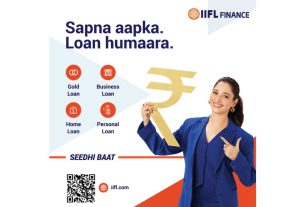Financial exclusion remains a significant barrier to economic participation for millions globally, particularly among low-income, rural, and marginalized communities. Traditional banking systems often overlook these populations due to factors like low income, lack of collateral, and limited access to financial infrastructure. In response, various alternative financial instruments have emerged, demonstrating effectiveness in promoting financial inclusion. This article explores several such instruments and presents evidence of their impact.
1. Community Currencies: Sarafu-Credit in Kenya
Sarafu-Credit is a community currency system implemented in informal settlements across Kenya. Operated by the Grassroots Economics Foundation, it allows local communities to trade using a complementary currency alongside the national currency. The system aims to stimulate local economies by mobilizing under-utilized resources.
Evidence of Effectiveness:
- Increased Income: Participating businesses reported an average income increase of 22%.
- Enhanced Local Trade: Up to 10% of local food purchases were made using the community currency.
- Improved Trust: Studies indicated a positive correlation between Sarafu-Credit usage and increased levels of trust among community members.
These outcomes suggest that community currencies can enhance economic activity and social cohesion in underserved areas.
2. Zero-Interest Lending Circles: Mission Asset Fund (MAF)
The Mission Asset Fund, based in San Francisco, facilitates zero-interest lending circles inspired by the Mexican “tanda” system. These lending circles are formalized and reported to credit bureaus, enabling participants to build or improve their credit scores.
Evidence of Effectiveness:
- Credit Score Improvement: Participants experienced an average credit score increase of 168 points.
- Cost Savings: On average, participants saved approximately $360 compared to alternative borrowing institutions.
- Business Growth: Some participants utilized their savings to expand small businesses, indicating improved financial stability.
MAF’s model demonstrates how culturally relevant financial practices can be adapted to support credit building and economic empowerment.
3. Mobile Money Platforms: M-Pesa in Kenya
M-Pesa is a mobile money service that allows users to store and transfer money via mobile phones, eliminating the need for a traditional bank account. It has been particularly impactful in regions with limited banking infrastructure.
Evidence of Effectiveness:
- Poverty Reduction: Access to M-Pesa increased per capita consumption levels and lifted approximately 194,000 Kenyan households out of poverty.
- Financial Inclusion: The platform has significantly improved financial access for individuals in remote areas, facilitating savings, remittances, and payments.
M-Pesa’s success underscores the potential of mobile technology in bridging financial gaps in underserved communities.
4. Solidarity Lending: Grameen Bank’s Model
Grameen Bank in Bangladesh pioneered solidarity lending, where small groups of individuals collectively guarantee each other’s loans. This model eliminates the need for traditional collateral, relying instead on social capital and peer pressure.
Evidence of Effectiveness:
- Access to Credit: Enabled individuals without formal collateral to access microcredit.
- Women’s Empowerment: The model has been particularly effective in empowering women by providing them with financial resources to start and sustain businesses.
While the effectiveness of group lending has been debated, Grameen Bank’s approach highlights the role of community-based mechanisms in facilitating financial inclusion.
5. No-Interest Loan Schemes: Good Shepherd Microfinance in Australia
Good Shepherd Microfinance, in partnership with National Australia Bank and the Australian government, offers no-interest loans (NILS) to low-income individuals for essential goods and services.
Evidence of Effectiveness:
- Improved Financial Outcomes: Clients reported increased savings levels and financial independence.
- Enhanced Well-being: Nearly three-quarters of clients experienced positive changes in their standards of living, stress, and anxiety levels.
- Diversion from High-Cost Credit: The scheme helped clients avoid high-cost credit products like payday loans and rent-to-own services.
NILS demonstrates how structured financial support can improve economic and social outcomes for vulnerable populations.
Conclusion
The effectiveness of these alternative financial instruments in combating financial exclusion is evident through various case studies and evaluations. By leveraging community-based approaches, technology, and innovative lending models, these instruments provide accessible financial services to underserved populations. Continued support and expansion of such initiatives are essential in promoting financial inclusion and economic empowerment globally.
Note: The information provided in this article is based on available data and case studies. For more detailed information and updates, refer to the respective organizations and studies mentioned.



